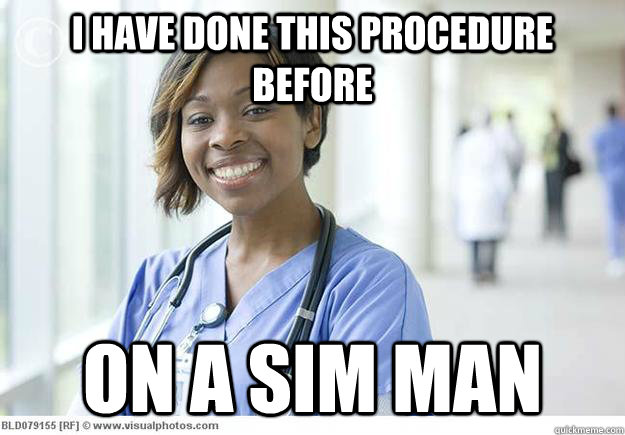This week we learned about the nursing process and diagnoses. The acronym for remember the order of what we need to do is ADPIE:
- Assess
- Diagnose
- Plan
- Interventions
- Evaluate
When we assess our patients, we perform a physical assessment (which I posted about a few weeks ago), gather information from the patient about their health history, look at information from the chart, and use our five senses to learn everything we can about the patient and his/her problems. This is the foundation for our nursing diagnosis.
Once we've assessed the patient, we need to come up with a nursing diagnosis. There is a big difference between a nursing diagnosis and a medical diagnosis. A medical diagnosis would be "congestive heart failure" while a nursing diagnosis would be "decreased cardiac output." Obviously, there's a lot more to both types of diagnoses but that's the basics: nurses can't diagnose a medical problem. We can describe the problem in our diagnosis, however.
There are a list of about 80 nursing diagnoses that can be used. They are regulated and approved by NANDA-I (North American Nursing Diagnosis Association International) and are all compiled in a wonderful book called the "Nursing Diagnosis Handbook." We've been warned that this book will become like the Bible to us.
Already, I've been amazed by what we can do with this book. In one section, we can look up our patient's problem and it will give us a list of possible diagnoses. Then, we look up the diagnoses and they give us the characteristics of the diagnosis so we can determine whether it's the right diagnosis for our patient.
Once our diagnosis is written, we move to the plan - what should we do about it? If our patient is at a risk for falls, our plan could be something as simple as, "My patient will not fall during my shift." The plan is just a goal.
After we determine our plan, we plan out our interventions - what steps do we need to do to accomplish the goal? The Nursing Diagnosis Handbook is very helpful for this - telling us good interventions for each diagnosis. In other words, what do I actually need to do to help my patient?
Last, but not least, is evaluation. Throughout the day, we need to be evaluating our patients, reassessing, and determining whether our goals are good. Sometimes, we can write "goal met!" Other times, we have to write, "Goal not met." It's not bad if the goal is not met, it just means the goal was not met. There is (usually) not judgement involved. For instance, if a woman is in active labor, the goal might be "patient will give birth during my shift." However, if the lady has a long labor, the nurse might have to write, "Goal not met. Patient is still in labor."
Usually, a patient has more than one diagnosis at a time so the diagnoses need to be listed in order of priority and implementation.
Until next week!





No comments:
Post a Comment